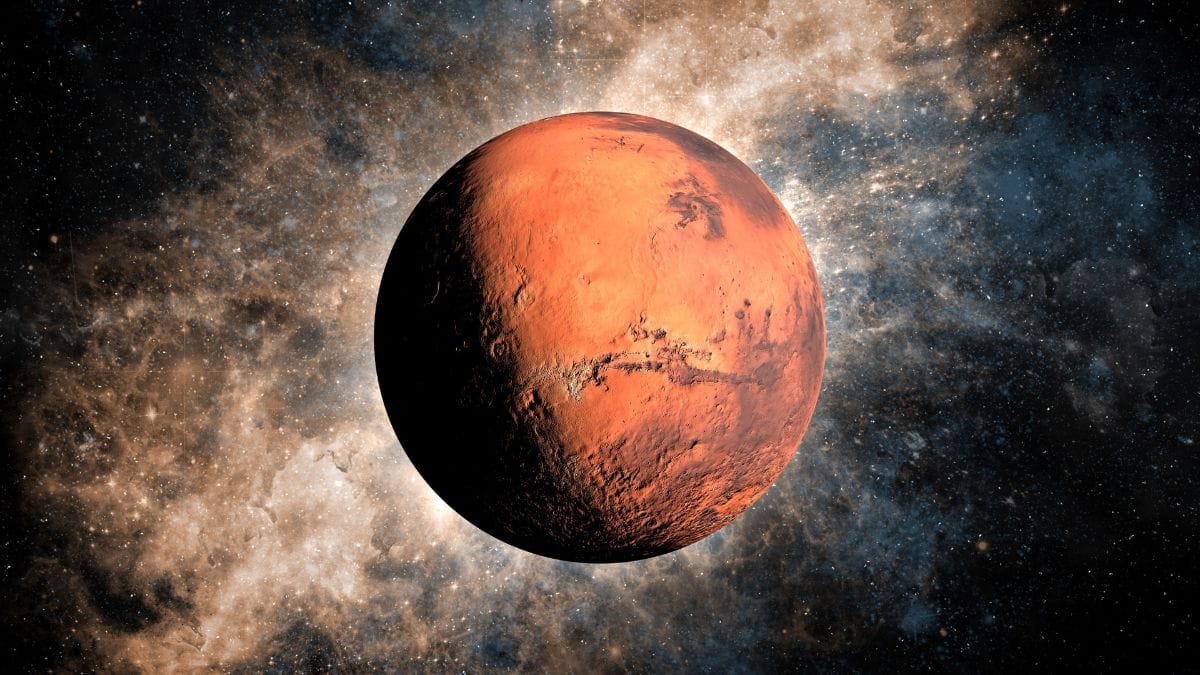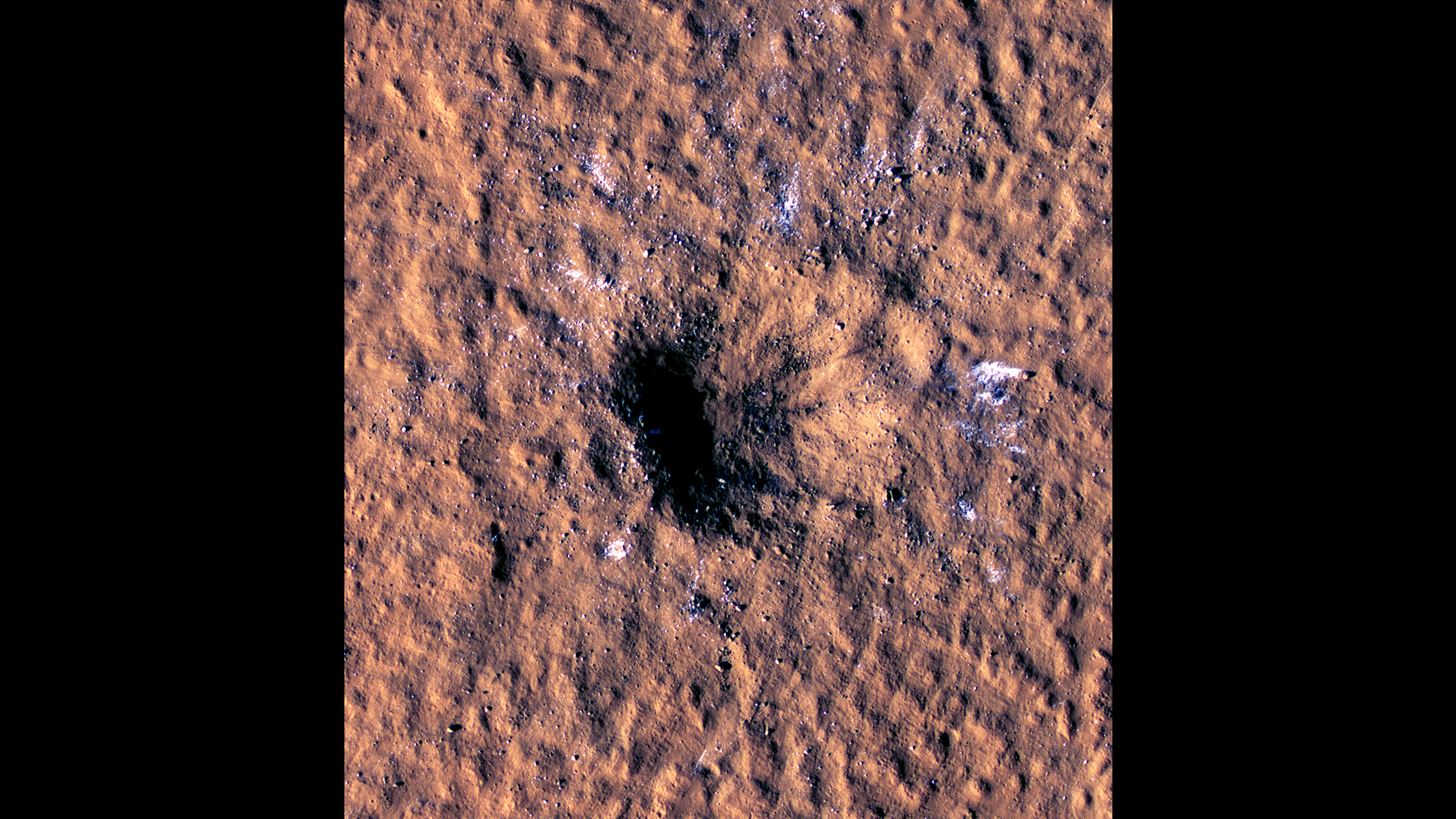
Scientists have long been fascinated by Mars, our neighboring planet that shares many similarities with Earth but has evolved into a cold, dry world. Recent discoveries from NASA’s InSight mission, which landed on Mars in 2018 and operated until 2022, have provided unprecedented insights into the planet’s interior. Using seismic data from marsquakes, researchers have determined that Mars has a liquid iron core with a radius of about 1,650 to 1,675 kilometers and a density around 6.5 to 6.65 grams per cubic centimeter (a measure of how tightly packed the material is). This core is surrounded by a 150-kilometer-thick layer of molten silicate rock, acting like a thermal blanket that influences heat flow. These findings, detailed in a 2023 Nature study on geophysical evidence for Mars’ interior structure, suggest the core contains iron mixed with lighter elements like sulfur (about 17 weight percent) and oxygen (around 3 weight percent), making it less dense than pure iron.
These revelations paint a picture of a planet whose heart—the core—has been cooling over billions of years, leading to dramatic changes on its surface. Unlike Earth, where a hot, churning core powers a protective magnetic field and drives plate tectonics, Mars’ core has cooled enough to halt such processes. This cooling has resulted in a thin atmosphere mostly of carbon dioxide at a pressure of just 0.006 bars (compared to Earth’s 1 bar), average surface temperatures of -60 degrees Celsius, and no global magnetic field to shield against solar radiation. Yet, early in its history, Mars was warmer and wetter, with evidence of ancient rivers and lakes from missions like Perseverance rover’s explorations in Jezero Crater, as reported in NASA’s 2023 Perseverance science highlights. The shift from a potentially habitable world to a barren one ties directly to the core’s thermal history.

What drives this difference between Mars and Earth? But why is Mars’ core cooling faster, and what does this mean for understanding planetary evolution?
What Is the Structure of Mars’ Interior?
Mars’ interior is layered much like Earth’s, but with key differences due to its smaller size and faster cooling. At the center lies the core, a sphere of mostly liquid iron alloy with a radius of approximately 1,650 kilometers, as determined from seismic wave analysis in a 2023 Nature paper evidencing a liquid silicate layer atop the core. This core makes up about 20-25% of the planet’s mass and has an average density of 6.5 grams per cubic centimeter, lower than Earth’s core density of around 13 grams per cubic centimeter because it includes lighter elements like sulfur and oxygen. Surrounding the core is a unique feature: a 150-kilometer-thick molten silicate layer with a density of 4.05 grams per cubic centimeter and P-wave speeds (seismic waves that compress material) of 4.5 to 5.5 kilometers per second, indicating it’s fully liquid rock enriched in iron oxide.
Above this lies the mantle, a thick layer of silicate rocks extending about 1,700 kilometers to the crust, with densities increasing from 3.5 to 4.0 grams per cubic centimeter under pressures up to 23 gigapascals (about 230,000 times Earth’s surface pressure). The mantle shows signs of past convection but is now mostly solid, with possible partial melts in deeper regions. The crust, varying from 10 to 50 kilometers thick, is basaltic and iron-rich, giving Mars its reddish hue from oxidized minerals. Comparisons help visualize: Earth’s core is twice as large in radius, with a solid inner part and liquid outer, sustaining vigorous motion. Mars’ smaller core means less internal heat capacity, like a small pot cooling quicker than a large one on a stove.
Fun fact: If Mars’ core were solid iron, it would be denser, but the light elements dilute it, much like adding foam to coffee reduces its overall weight per volume. Bullet points for key measurements:
- Core radius: 1,650 ± 20 km
- Core density: 6.5 g/cm³
- Molten silicate layer thickness: 150 ± 15 km
- Mantle thickness: ~1,700 km
These details, cross-checked across sources like NASA’s InSight data and peer-reviewed models, confirm Mars’ interior is cooling, with heat flow at the core-mantle boundary estimated at 10-20 milliwatts per square meter—far less than Earth’s 50-100 milliwatts per square meter.
How Does Planetary Size Affect Core Cooling Rate?
Planetary size plays a crucial role in how quickly a world’s core cools, primarily through the surface-to-volume ratio. Mars has a radius of 3,389 kilometers and mass of 6.39 × 10²³ kilograms (just 0.107 times Earth’s), meaning it has a higher surface area relative to its volume compared to Earth. Heat escapes through the surface, so smaller planets like Mars lose internal heat faster, similar to how a small coffee cup cools quicker than a large thermos. According to a 2024 University of Arizona press release on planetary size and cooling, Mars’ small mass (11% of Earth’s) resulted in less initial heat from formation and faster radiation loss, with its core cooling rapidly within the first billion years.

Earth’s larger volume retains heat longer, aided by radioactive decay of elements like uranium and thorium in the mantle, generating about 20 terawatts of heat—comparable to millions of power plants. Mars produces far less, estimated at 2-5 terawatts, due to fewer such elements. Without plate tectonics, which on Earth recycles heat by subducting cool crust, Mars’ stagnant lid (a rigid outer layer) traps less heat internally. Visual aid suggestion: Imagine a graph showing cooling curves—Mars’ line drops steeply, Earth’s gradually, with time on x-axis (billions of years) and temperature on y-axis.
Comparisons: Mercury, even smaller (radius 2,440 km), cooled fast and has a solid core with minimal activity. Venus, similar to Earth in size, retains heat but lacks a dynamo possibly due to no inner core solidification. Fun fact: Doubling a planet’s radius increases volume eightfold but surface only fourfold, so bigger worlds cool slower—like why elephants stay warm easier than mice.
Bullet points on factors:
- Surface-to-volume ratio: Higher for Mars, accelerates heat loss.
- Initial heat: Mars formed with less due to smaller accretion mass.
- Radioactive heating: Lower in Mars, reducing sustained warmth.
These principles, verified in models from ESA and JAXA studies, explain why Mars’ core temperature has dropped to around 1,800-2,000 Kelvin, cooler than Earth’s 5,000-6,000 Kelvin.
What Evidence From Mars Missions Tells Us About the Core?
Space missions have been pivotal in unveiling Mars’ core secrets, with NASA’s InSight lander leading the way. Deployed in 2018, InSight’s seismometer detected over 1,300 marsquakes, allowing scientists to map seismic waves traveling through the planet. These waves revealed the core’s liquid state, with S-waves (shear waves that can’t pass through liquids) stopping at the core boundary, as analyzed in a 2024 Science Advances study on Martian core thermal conductivity. The core’s thermal conductivity, 19-32 watts per meter-kelvin, indicates efficient heat escape, speeding cooling.
Earlier missions like Viking in the 1970s hinted at a cooled interior through lack of strong quakes, but InSight confirmed it with precise data: core heat flux below 20 milliwatts per square meter, insufficient for strong convection. ESA’s Mars Express orbiter, since 2003, used radar to probe subsurface, supporting mantle composition models. JAXA’s contributions, though focused on moons, align with global views via collaborative data.
Comparisons: Earth’s seismic networks show active core motion; Mars’ quakes are weaker, like mild tremors. Fun fact: A marsquake from a meteor impact in 2022 allowed waves to traverse the core, confirming its size—imagine throwing a pebble in a pond and measuring ripples.
Bullet points on key evidence:
- Seismic waves: P-waves slow in molten layers, matching 4.5-5.5 km/s.
- Density profiles: From gravity data, core lighter than expected.
- Thermal models: High conductivity from lab experiments on iron-sulfur alloys.
These facts, consistent across 2023-2025 updates, underscore faster cooling than Earth’s.
Why Does Earth’s Core Stay Hot Longer Than Mars’?
Earth’s core remains hotter due to its larger size, active processes, and composition. With a radius of 3,485 kilometers (inner solid plus outer liquid), Earth’s core holds more heat from formation and radioactive decay, producing 44 terawatts total—half from the core. Plate tectonics recycles heat, keeping the mantle dynamic, unlike Mars’ static lid. Earth’s core density (12-13 g/cm³) and higher pressure (360 gigapascals at center) sustain liquidity and convection.
Mars, half Earth’s radius, lost heat quicker, with its dynamo shutting off 4 billion years ago. Earth’s magnetic field, from outer core motion at 1-2 km/year, persists; Mars’ ended as cooling slowed convection. Visual: Suggest a diagram comparing core cross-sections—Earth’s layered and active, Mars’ simpler and quieter.
Fun fact: Earth’s inner core grows 1 mm/year from freezing, releasing heat; Mars lacks this, per InSight.
Bullet points:
- Size advantage: Earth retains 10x more heat capacity.
- Tectonics: Aids heat distribution on Earth.
- Composition: Earth’s denser core with less sulfur holds heat better.
Data from peer-reviewed sources like Nature confirm Earth’s slower cooling rate.
What Are the Consequences of Mars’ Core Cooling Faster?
Faster core cooling has transformed Mars from potentially life-friendly to inhospitable. Without a dynamo, the magnetic field vanished 4 billion years ago, exposing the atmosphere to solar wind erosion. Atmosphere thinned to 0.006 bars, mostly CO₂ (95%), with traces of nitrogen (2.6%) and argon (1.9%), density 0.02 kg/m³—1% of Earth’s. Water vapor split, hydrogen escaped, leaving dry valleys seen in NASA InSight science highlights.

No tectonics means no recycling, leading to massive extinct volcanoes like Olympus Mons (22 km high). Surface quakes are rare and weak, magnitude <4. Comparisons: Earth’s active core drives quakes, volcanoes, and life-sustaining cycles.
Fun fact: Mars’ polar ice caps hold frozen CO₂ and water, but without heat, no widespread melting.
Bullet points on impacts:
- Atmosphere loss: Solar wind stripped 90% over billions years.
- No protection: High radiation, 200 millisieverts/year vs Earth’s 2.4.
- Geological inactivity: Few changes, ancient craters preserved.
These effects, verified by missions, highlight cooling’s role in Mars’ fate.
Conclusion
Mars’ core cooling faster than Earth’s stems from its smaller size, higher surface-to-volume ratio, and lack of heat-retaining processes like plate tectonics, leading to a lost magnetic field, thin atmosphere, and inactive geology. Recent missions like InSight have illuminated these dynamics, showing a liquid core with a molten silicate blanket, but one that’s steadily losing vigor. This contrasts with Earth’s enduring heat, underscoring how planetary scale shapes destiny.
Sources
Hsieh, W. P., Deschamps, F., Tsao, Y. C., Yoshino, T., & Lin, J. F. (2024). A thermally conductive Martian core and implications for its dynamo cessation. Science Advances, 10(12), eadk1087. https://doi.org/10.1126/sciadv.adk1087
Khan, A., Huang, D., Durán, C., Sossi, P. A., Giardini, D., & Murakami, M. (2023). Evidence for a liquid silicate layer atop the Martian core. Nature, 622(7984), 718-723. https://doi.org/10.1038/s41586-023-06586-4
NASA. (2023, August 3). NASA InSight study finds Mars is spinning faster. NASA. https://www.nasa.gov/missions/insight/nasa-insight-study-finds-mars-is-spinning-faster/
Samuel, H., Drilleau, M., Rivoldini, A., Xu, Z., Huang, Q., Garcia, R. F., Lekić, V., Irving, J. C. E., Badro, J., Lognonné, P. H., Connolly, J. A. D., Kawamura, T., Gudkova, T., & Banerdt, W. B. (2023). Geophysical evidence for an enriched molten silicate layer above Mars’s core. Nature, 622(7984), 712-717. https://doi.org/10.1038/s41586-023-06601-8
University of Arizona. (2024, February 1). Why Mars died while Earth survived. University of Arizona Astrobiology. https://astrobiology.arizona.edu/news/why-mars-died-while-earth-survived
📌 Frequently Asked Questions
Did Mars once have a magnetic field like Earth?
Yes, Mars had a global magnetic field until about 4 billion years ago, generated by its then-active core dynamo. As the core cooled, convection slowed, shutting off the field, as evidenced in NASA’s InSight mission findings. This allowed solar winds to erode the atmosphere over time
How big is Mars’ core compared to Earth’s?
Mars’ core has a radius of about 1,650 kilometers, roughly half Earth’s core radius of 3,485 kilometers. This smaller size contributes to faster cooling, with densities of 6.5 g/cm³ versus Earth’s 12-13 g/cm³.
Is Mars’ core completely solid now?
No, Mars’ core is mostly liquid iron alloy, with recent seismic data from InSight showing no solid inner core, unlike Earth. However, it’s cooling, and full solidification could occur in billions of years.
Why doesn’t Mars have plate tectonics?
Mars lacks plate tectonics due to its cooled mantle and stagnant lid, where the crust doesn’t recycle. Earth’s hotter core drives mantle convection, enabling plates to move at 2-10 cm/year.
What is the temperature of Mars’ core?
Mars’ core temperature is estimated at 1,800-2,000 Kelvin, cooler than Earth’s 5,000-6,000 Kelvin, based on thermal models and seismic data.
Does Mars have volcanoes because of its core?
Mars has extinct volcanoes like Olympus Mons, fueled by past mantle heat, but core cooling halted widespread activity around 3 billion years ago.
How fast is Mars’ atmosphere being lost today?
Mars loses about 100 grams of atmosphere per second to solar wind, a slow process over millions of years, measured by NASA’s MAVEN orbiter.
Could Mars’ core reactivate in the future?
Possibly, if inner core solidification begins, releasing latent heat for convection, but models suggest this is unlikely for billions of years.
What light elements are in Mars’ core?
Sulfur (16-17 wt%), oxygen (2-3 wt%), and traces of carbon and hydrogen dilute the iron, lowering density to 6.5 g/cm³.
Is there water in Mars’ core or mantle?
Mars’ mantle may hold water in minerals, equivalent to a global ocean 20-30 meters deep, but the core likely has minimal hydrogen.
Leave a Reply